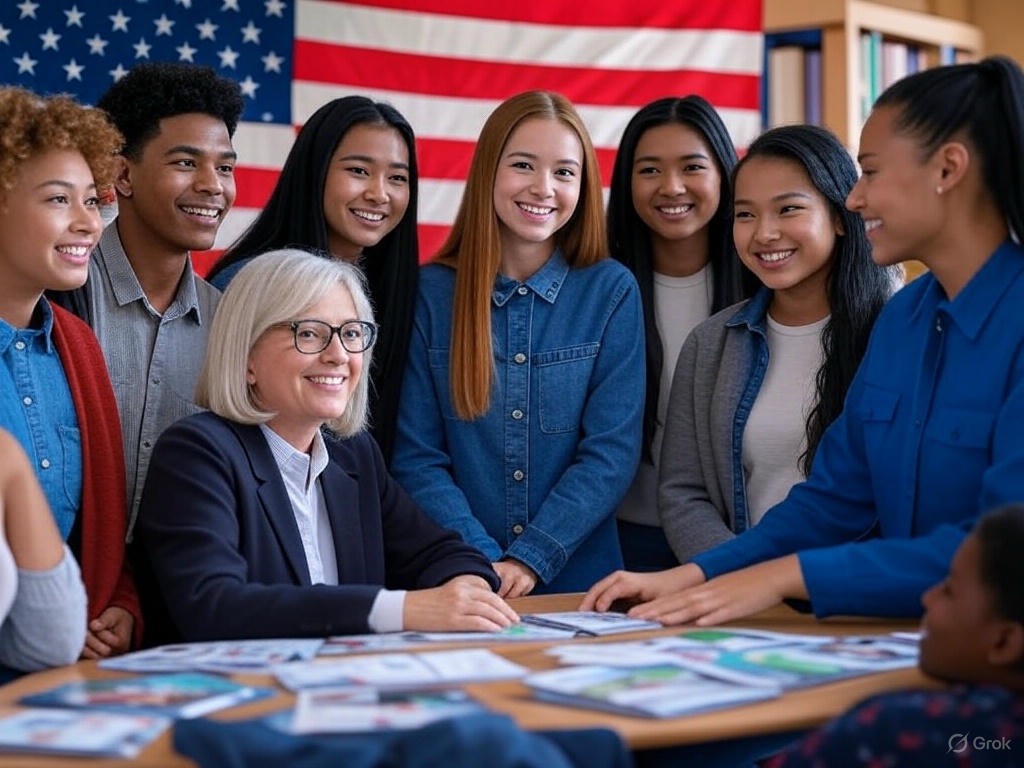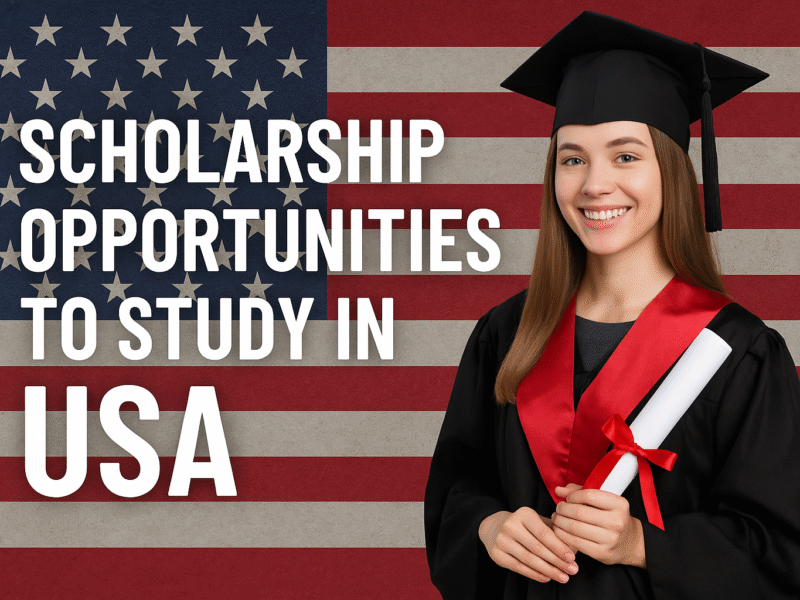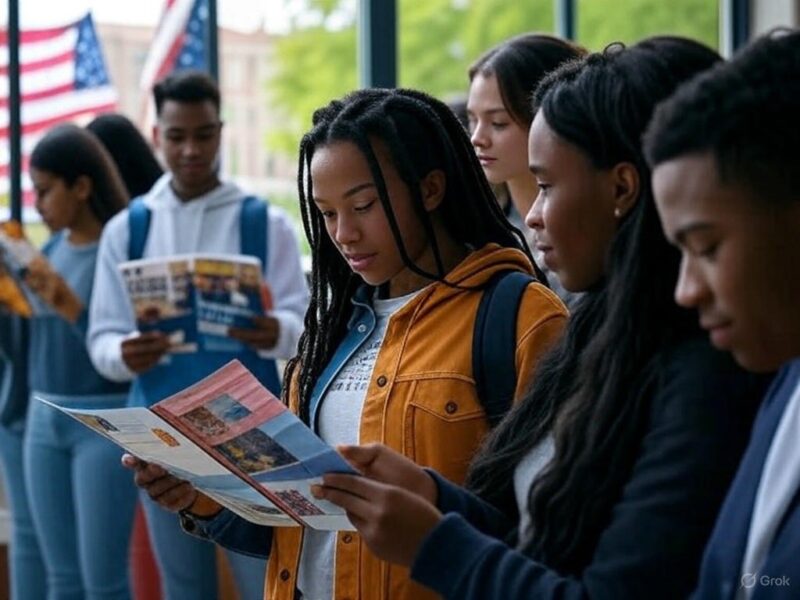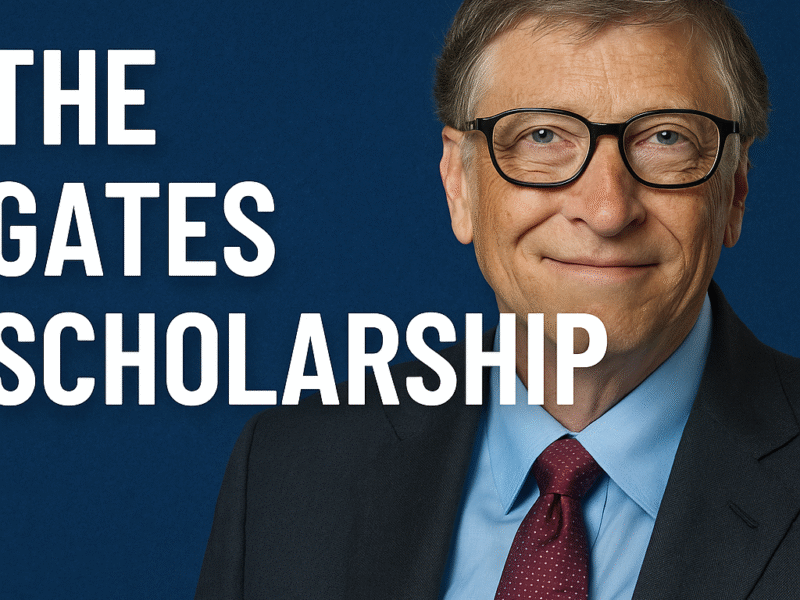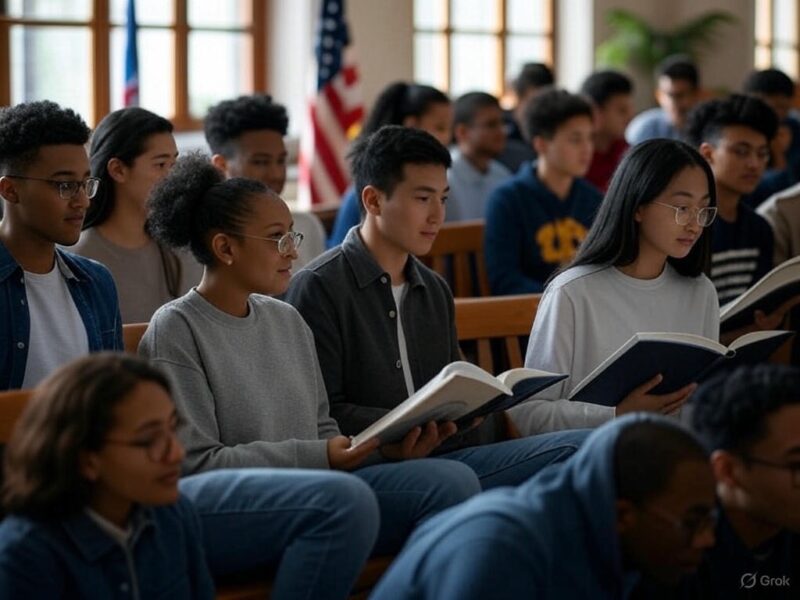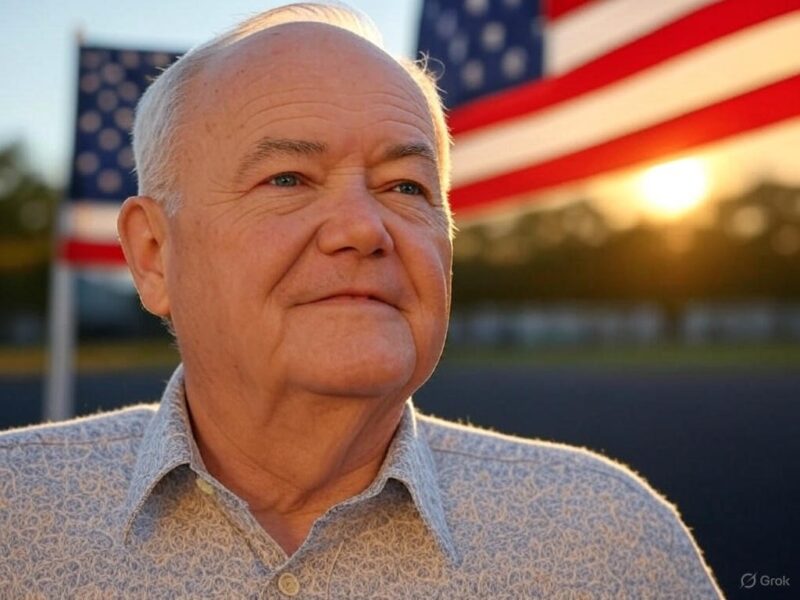The United States hosts over 1.05 million international students annually, per the Institute of International Education (IIE), drawn by its world-class education and diverse opportunities.
Scholarships, ranging from $5,000 to $70,000+, make studying in the USA affordable, covering tuition, living expenses, and travel for undergraduates, master’s, and PhD students.
This guide explores top scholarships, visa processes, and strategies to secure funding in 2025, enabling you to study at elite institutions like Harvard or affordable colleges like Berea.
High costs—averaging $45,000/year for undergraduates, per topuniversities.com—can deter students, but fully funded scholarships like Fulbright or Berea’s 100% first-year funding remove barriers.
Visa sponsorship via F-1 or J-1 visas is often facilitated by universities or programs, ensuring legal study. With 600+ universities offering awards worth $20,000+, per scholars4dev.com, opportunities are vast for motivated applicants.
Competition is fierce, with thousands vying for awards like Fulbright, but early preparation and tailored applications boost success, per scholarshiproar.com. Resources like InternationalStudent.com and EducationUSA provide critical support for navigating applications and visas. Start now to unlock a transformative education in the USA with scholarships that ease financial burdens.
Benefits of Schooling in USA
Studying in the USA offers unparalleled academic and professional advantages, attracting global talent to institutions like Stanford and Yale.
The country’s 4,000+ universities provide diverse programs, cutting-edge research, and networking with industry leaders, per timeshighereducation.com. Scholarships make this accessible, enabling students to focus on learning without financial stress.
Graduates benefit from global recognition, with US degrees enhancing career prospects in fields like tech, medicine, and finance, per usnews.com. Cultural diversity, vibrant campus life, and opportunities like Optional Practical Training (OPT) via F-1 visas enrich the experience. Scholarships often include mentorship, internships, or stipends, amplifying these benefits, per internationalstudent.com.
The USA’s innovation-driven economy and inclusive environment foster personal growth and global perspectives, per educationusa.state.gov. From community colleges to Ivy League schools, students gain skills for a competitive job market. Scholarships like Fulbright or Clark University’s awards ensure these advantages are within reach for international students.
Fully Funded Scholarships USA
Fully funded scholarships cover tuition, accommodation, health insurance, travel, and stipends, allowing international students to study for free in 2025.
Programs like the Fulbright Foreign Student Program, University of Miami Stamps Scholarship, and Stanford University Scholarship offer awards up to $70,000/year, per scholarshiproar.com. These target academic excellence, leadership, or financial need across all degree levels.
The Fulbright Program funds 4,000+ graduate students annually across 160 countries, covering tuition, airfare, and stipends, per foreign.fulbrightonline.org.
The Stamps Scholarship at Miami provides full tuition, room, board, and $12,000 for research for undergraduates, per scholars4dev.com. Stanford’s scholarship supports master’s/PhD students in STEM or humanities, including travel and living allowances, averaging $50,000/year.
- Top fully funded scholarships:
- Fulbright Foreign Student Program: Master’s/PhD, $20,000-$40,000/year, full coverage.
- University of Miami Stamps Scholarship: Undergraduate, full tuition + $12,000 research.
- Stanford University Scholarship: Master’s/PhD, full tuition + stipend, ~$50,000/year.
- Berea College Scholarship: Undergraduate, 100% first-year funding, ~$45,000/year.
- AAUW International Fellowship: Graduate women, $18,000-$30,000/year.
Applications require essays, recommendation letters, and TOEFL/IELTS scores (80+/6.5+), with deadlines from December 2024 to June 2025, per topuniversities.com. Universities facilitate F-1/J-1 visa sponsorship with I-20/DS-2019 forms, per uscis.gov. Early submission is critical due to high competition and visa processing times (1-3 months).
International Student Scholarships
International students can access a wide range of scholarships, from government-backed Fulbright to private awards like the Aga Khan Foundation Scholarship, offering $10,000-$70,000+, per scholars4dev.com.
These annual scholarships for 2025 cover tuition, living costs, and sometimes visa fees, targeting undergraduates, graduates, and professionals. Eligibility often includes academic merit, financial need, or leadership, with F-1/J-1 visa sponsorship included.
The Aga Khan Foundation provides 50% grant/50% loan scholarships for master’s/PhD students from developing countries, covering $15,000-$25,000/year, per edupass.org.
Yale’s need-based scholarship, averaging $50,000/year, supports all degree levels, prioritizing financial hardship, per amberstudent.com. The #YouAreWelcomeHere Scholarship, at 50+ universities, offers $15,000+/year for undergraduates demonstrating intercultural leadership, per topuniversities.com.
- Key international student scholarships:
- Aga Khan Foundation Scholarship: Master’s/PhD, $15,000-$25,000/year, developing countries.
- Yale University Scholarship: All levels, need-based, up to $70,000/year.
- #YouAreWelcomeHere Scholarship: Undergraduate, $15,000+/year, leadership focus.
- Clark University Global Scholars: Undergraduate, $10,000+/year + $2,500 internship.
- University of Memphis Scholarship: Undergraduate/master’s, full/partial tuition.
Applications demand transcripts, essays, and 2-3 recommendation letters, with deadlines between December 2024 and June 2025, per InternationalStudent.com. Universities assist with F-1/J-1 visa processes, but students must prove home country ties during interviews, per educationusa.state.gov. Tailored applications and early preparation enhance success rates.
USA University Scholarships
Top US universities like Harvard, Yale, and Berea College offer annual scholarships for 2025, covering 50-100% of costs, enabling international students to study affordably, per timeshighereducation.com.
These merit-based, need-based, or field-specific awards, ranging from $10,000 to $70,000+, target diverse fields like STEM, humanities, and business. Visa sponsorship (F-1/J-1) is facilitated by university international offices, streamlining legal study.
Berea College funds 100% of first-year costs (~$45,000) for all admitted international undergraduates, requiring $1,000/year contributions thereafter, per scholars4dev.com.
Harvard’s need-based scholarships, up to $60,000/year, support all degree levels with competitive selection, per amberstudent.com. The University of New Haven provides master’s students 75% tuition assistance plus hourly wages, ideal for professional fields, per scholarshiproar.com.
- Top university scholarships:
- Berea College Scholarship: Undergraduate, 100% first-year funding, ~$45,000/year.
- Harvard University Scholarship: All levels, need-based, up to $60,000/year.
- University of New Haven Scholarship: Master’s, 75% tuition + hourly wages.
- University of Oregon International Scholarship: All levels, $5,000-$45,000/year.
- Dartmouth College Scholarship: Undergraduate, need-based, includes travel allowance.
Deadlines fall between December 2024 and March 2025, requiring SAT/ACT (1200+/26+) for undergraduates or GRE/GMAT for graduates, per usnews.com.
Universities issue I-20/DS-2019 forms for F-1/J-1 visas post-acceptance, per educationusa.state.gov. Early applications maximize funding and visa preparation opportunities.
Government Funded Scholarships
Government-funded scholarships, like the Fulbright Foreign Student Program and Hubert H. Humphrey Fellowship, provide fully funded opportunities for international students to study in the USA.
Administered by the US Department of State, these prestigious programs cover tuition, living expenses, airfare, and health insurance, offering $20,000-$40,000+, per foreign.fulbrightonline.org. They emphasize cultural exchange and require F-1 or J-1 visa sponsorship.
The Fulbright Program supports 4,000+ graduate students across 160 countries, funding master’s, PhD, or non-degree studies (excluding medicine), per topuniversities.com.
The Humphrey Fellowship, a non-degree program, funds 10 months of professional enrichment for mid-career professionals from developing countries, covering ~$30,000/year, per scholars4dev.com. Applications, due May-June 2025, require strong academics and leadership.
- Key government-funded scholarships:
- Fulbright Foreign Student Program: Master’s/PhD, $20,000-$40,000/year, full funding.
- Hubert H. Humphrey Fellowship: Non-degree, ~$30,000/year, professional enrichment.
- Foreign Language and Area Studies (FLAS) Fellowship: Language/area studies, $15,000+/year.
- Nancy Foster Scholarship: Graduate, marine sciences, $10,000-$20,000/year.
- Ernest F. Hollings Scholarship: Undergraduate, oceanic/atmospheric science, ~$9,500/year.
Applications need essays, recommendation letters, and TOEFL/IELTS scores (80+/6.5+), per educationusa.state.gov. US embassies or Fulbright Commissions assist with J-1/F-1 visa sponsorship, per uscis.gov. Early preparation, starting 12-18 months in advance, is essential due to high competition.
Visa Sponsorship for Scholarships
Scholarships often include visa sponsorship support, requiring F-1 (academic) or J-1 (exchange) visas for international students to study legally in the USA. Universities and programs like Fulbright provide I-20 (F-1) or DS-2019 (J-1) forms post-acceptance, per educationusa.state.gov. Scholarships may cover visa fees ($185) and SEVIS fees ($350), but students must prove funding and home country ties during interviews, per uscis.gov.
F-1 visas allow on-campus work (20 hours/week) and Optional Practical Training (OPT) post-graduation, ideal for degree programs, per internationalstudent.com. J-1 visas, used for exchange programs like Fulbright, have stricter work limits but suit short-term studies, per topuniversities.com. Visa processing (1-3 months) can delay enrollment, so apply immediately after scholarship confirmation, per edvoy.com.
- Visa sponsorship essentials:
- F-1 Visa: Degree programs, on-campus work, OPT eligible, $185 fee.
- J-1 Visa: Exchange programs, limited work, 1-2 years, $185 fee.
- Documents: I-20/DS-2019, passport, scholarship award letter, financial proof.
- SEVIS Fee: $350, sometimes covered by scholarships.
- Interview Tips: Show home country ties, clear study goals, financial stability.
EducationUSA advisors or US embassies clarify visa processes, per educationusa.state.gov. For example, Berea College covers SEVIS fees for scholarship recipients, per scholars4dev.com. Early visa applications ensure timely enrollment for 2025 programs.
How to Find Scholarships USA
Finding scholarships involves strategic research via online platforms, university websites, and embassy resources. InternationalStudent.com and scholars4dev.com offer databases with 2,000+ awards, filterable by country, field, or degree, per edupass.org. University financial aid pages, like Harvard’s or Berea’s, detail scholarships with deadlines from December 2024 to June 2025, per usnews.com. EducationUSA centers provide free advising, per educationusa.state.gov.
Networking on LinkedIn with professors or alumni from programs like Fulbright uncovers unadvertised opportunities, per leverageedu.com. Platforms like Fastweb and Scholarship America list 1.5 million awards worth $3.4 billion, per edupass.org. Subscribing to IIE or EducationUSA newsletters ensures timely updates on 2025 scholarships, per iie.org.
- Effective scholarship search strategies:
- Use InternationalStudent.com, scholars4dev.com for databases.
- Check university financial aid pages (e.g., Yale, Clark).
- Consult EducationUSA advisors at US embassies.
- Network with alumni on LinkedIn for recommendations.
- Set alerts on Fastweb, Scholarship America, IIE newsletters.
- Join Reddit’s r/scholarships for peer insights.
A STEM student might discover the ACI Foundation Scholarship ($10,000-$15,000) via scholars4dev.com, while a humanities student could find #YouAreWelcomeHere via topuniversities.com. Start searching 12-18 months in advance to meet deadlines, per edvoy.com. Save promising awards for detailed applications.
Scholarship Application Tips
A standout scholarship application highlights academic excellence, leadership, and personal goals, tailored to each program’s criteria. Essays (400-500 words) should address prompts like “Why study in the USA?” with specific, authentic examples, per usnews.com. Submit transcripts, TOEFL/IELTS scores (80+/6.5+), and 2-3 recommendation letters from professors or employers, per internationalstudent.com.
Start applications 6-12 months before deadlines (December 2024-June 2025) to refine essays and gather documents, per scholarshiproar.com. For visa-sponsored scholarships, include a statement confirming F-1/J-1 eligibility and home country ties, per uscis.gov. Follow up with providers to confirm receipt, showing diligence, per leverageedu.com.
- Application best practices:
- Craft tailored essays with personal, authentic stories.
- Include transcripts, TOEFL/IELTS, 2-3 recommendation letters.
- Start early, track deadlines (December 2024-June 2025).
- Avoid plagiarism, use spellcheck, seek advisor feedback.
- Confirm F-1/J-1 eligibility in application materials.
- Follow up within 1-2 weeks post-submission.
For Fulbright, emphasize cultural exchange goals, while Berea applications highlight financial need, per scholars4dev.com. Reviewing past winners’ essays on educations.com provides inspiration, per bestcolleges.com. A polished application secures funding and visa support.
Scholarship Eligibility Requirements
Eligibility for USA scholarships typically requires a minimum GPA (3.0+), English proficiency (TOEFL 80+/IELTS 6.5+), and leadership or financial need, per internationalstudent.com. Programs like Fulbright demand specific fields (e.g., non-medical graduate studies), while Aga Khan targets developing countries with proof of financial hardship, per edupass.org. Undergraduate scholarships, like Berea’s, often need SAT/ACT scores (1200+/26+), per usnews.com.
Graduate scholarships, like AAUW’s, require research proposals or work experience, while #YouAreWelcomeHere emphasizes essays or videos, per topuniversities.com. Deadlines from December 2024 to June 2025 are strict, and incomplete applications are rejected, per scholars4dev.com. Multi-year scholarships require full-time enrollment and a minimum GPA (2.5-3.0) for renewal, per scholarshiproar.com.
- Common eligibility requirements:
- Academic: GPA 3.0+, SAT/ACT for undergraduates, GRE/GMAT for graduates.
- English: TOEFL 80+/IELTS 6.5+, sometimes waived for certain countries.
- Documents: Transcripts, essays, 2-3 recommendation letters.
- Specifics: Field, country, or financial need criteria.
- Visa: F-1/J-1 eligibility, proof of home country ties.
- Renewal: Full-time enrollment, GPA 2.5-3.0.
Check scholarship websites (e.g., fulbright.org, yale.edu) for exact criteria, per educationusa.state.gov. For example, the ACI Foundation Scholarship requires STEM enrollment, while Fulbright needs a bachelor’s degree, per scholars4dev.com. Early preparation ensures compliance with academic and visa requirements.
Cost of Studying in USA
Studying in the USA is costly, with undergraduate tuition averaging $45,000/year and graduate programs $30,000-$60,000/year, per topuniversities.com. Living expenses—accommodation ($800-$2,000/month), food ($300/month), and transport ($100/month)—add $12,000-$20,000/year, per Numbeo. Scholarships like Berea’s or Fulbright’s cover these, making study affordable, per scholars4dev.com.
Public universities, like the University of Arkansas, cost $25,000/year, while private ones, like Harvard, exceed $60,000, per timeshighereducation.com. Mandatory health insurance for F-1/J-1 visa holders costs $1,500-$2,500/year, per internationalstudent.com. Scholarships with stipends or work opportunities, like Berea’s campus jobs, offset expenses, per scholarshiproar.com.
- Key study expenses:
- Tuition: $25,000-$60,000/year (public vs. private).
- Accommodation: $800-$2,000/month, shared housing cheaper.
- Living Costs: $12,000-$20,000/year (food, transport).
- Health Insurance: $1,500-$2,500/year, mandatory.
- Visa/SEVIS Fees: $185/$350, often scholarship-covered.
Choosing public universities or shared accommodation reduces costs, per bestcolleges.com. Fully funded scholarships ensure financial stability, allowing focus on academics and visa compliance, per edvoy.com. Budgeting is crucial for a seamless study experience.
Networking for Scholarships
Networking with professors, alumni, and EducationUSA advisors uncovers scholarship opportunities and strengthens applications. University webinars, like Yale’s financial aid sessions, or EducationUSA fairs connect you with scholarship officers, per educationusa.state.gov. LinkedIn networking with Fulbright or AAUW alumni provides insights and recommendation letters, per leverageedu.com.
Engaging in academic conferences or forums like Reddit’s r/scholarships offers peer advice, per internationalscholarships.com. Joining international student groups on Discord or Facebook shares leads, per edupass.org. Following up with contacts post-event maintains relationships and shows commitment, per edvoy.com.
- Networking strategies:
- Attend EducationUSA fairs, university financial aid webinars.
- Connect with alumni on LinkedIn for tips, references.
- Participate in academic conferences, field-specific workshops.
- Engage in r/scholarships, Discord student communities.
- Follow up with contacts within 1-2 weeks.
- Seek professor mentorship for award nominations.
A Fulbright applicant might connect with alumni at an IIE event, securing a strong recommendation, per iie.org. Start networking 12 months before applications to build a support system, per topuniversities.com. Relationships amplify your scholarship and visa prospects.
Challenges of USA Scholarships
Securing scholarships is highly competitive, with Fulbright receiving thousands of applications for 4,000 awards, per foreign.fulbrightonline.org. Visa delays (1-3 months) can disrupt enrollment, requiring early applications, per uscis.gov. High living costs ($12,000-$20,000/year) challenge partially funded scholarship recipients, per Numbeo.
Language barriers, needing TOEFL/IELTS (80+/6.5+), exclude some applicants, per edvoy.com. Scholarship scams, promising “guaranteed” funding, target international students, per internationalstudent.com. Strict eligibility criteria and renewal conditions (e.g., GPA 2.5+) add pressure, per scholars4dev.com.
- Common challenges:
- High competition (e.g., Fulbright’s 4,000 awards).
- Visa delays (1-3 months), complex F-1/J-1 processes.
- High living costs, gaps in partial funding.
- Language barriers, TOEFL/IELTS requirements.
- Scams, strict eligibility, renewal conditions.
Using trusted platforms like Scholarship America, improving English via Duolingo, and consulting EducationUSA advisors mitigate risks, per scholarshipamerica.org. Applying to multiple scholarships and starting 12-18 months early increases success, per usnews.com. Persistence overcomes these hurdles.
Conclusion
Scholarship opportunities in the USA for 2025, from Fulbright to Berea College’s fully funded awards, make world-class education accessible, covering tuition, living costs, and F-1/J-1 visa sponsorship. By leveraging platforms like scholars4dev.com, networking with EducationUSA, and crafting standout applications, you can secure funding for undergraduate, master’s, or PhD programs. Act now to study at top institutions like Harvard or Yale and transform your future.
Explore InternationalStudent.com, connect with university advisors, and prepare visa documents early, per educationusa.state.gov. With dedication and strategy, you’ll unlock a USA education without financial barriers. Share your scholarship journey in the comments or reach out for more tips!
Sources: scholars4dev.com, topuniversities.com, internationalstudent.com, educationusa.state.gov, amberstudent.com, scholarshiproar.com, bestcolleges.com, timeshighereducation.com, usnews.com, edvoy.com, leverageedu.com, scholarshipamerica.org, iie.org, foreign.fulbrightonline.org, edupass.org, internationalscholarships.com
